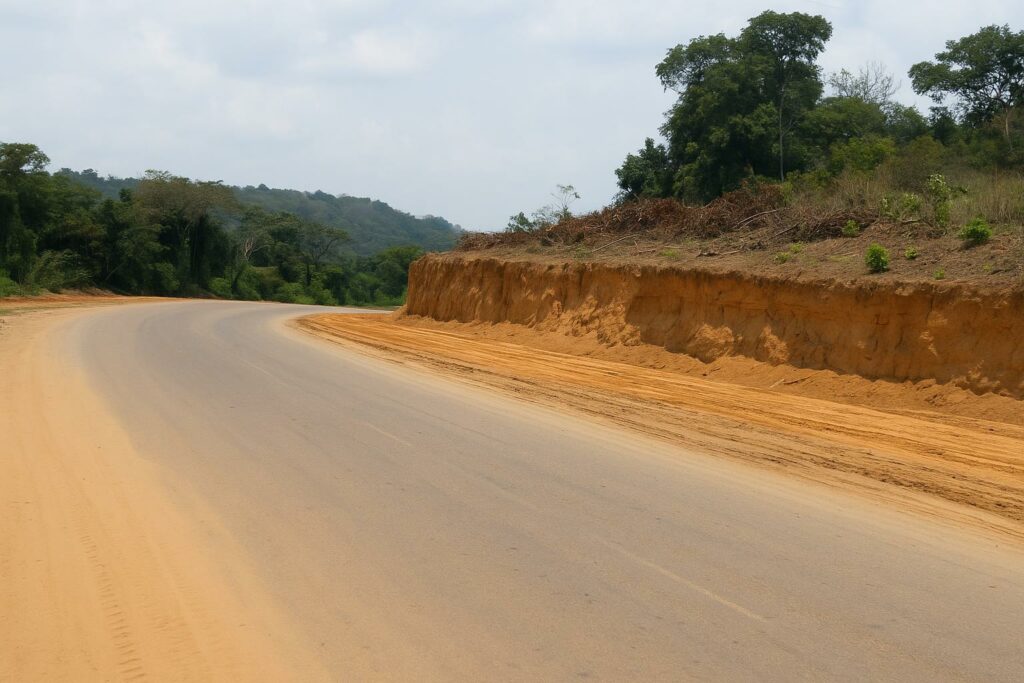A notorious curve etched in drivers’ memories
Every seasoned motorist heading north from Brazzaville can point out the exact moment tranquillity gives way to adrenaline: the abrupt right-hand turn known locally as the Mbamba bend. Wedged just beyond the hamlet of Inoni falaise, the curve combines a steep gradient, scant shoulder space and a descent hemmed in by discreet ravines. Steering errors here are unforgiving, a reality taught by the long convoy of timber trucks, inter-city buses and private cars that negotiate the spot daily. The road demands an immediate downshift, a firm press on the brake and a split-second correction to the left in order to avoid the wooded precipices that lurk on either flank before the ascent resumes.
Engineering crews tackle the Brazzaville-Ollombo axis
The Ministry of Public Works has concentrated machinery and asphalt mixers along the 388-kilometre corridor linking Brazzaville to Ollombo. Priority zones—where weather, axle overloads and time have eroded the pavement—now display a fresh ribbon of bitumen. Yet the true litmus test of the campaign lies at Mbamba. Redimensioning operations there entail widening the carriageway, softening the approach radius and reinforcing the sub-base to accommodate heavier commercial traffic without compromising adherence. Temporary traffic controls attest to the delicate choreography between construction crews and road users, as one lane remains open to ensure that medical supplies, perishable goods and passengers continue to flow to the Sangha and Cuvette departments.
From rehabilitation to sustainable stewardship
The current facelift, once completed, will raise reasonable expectations on governance. Today, RN2 counts fewer weighbridges and toll plazas than the coastal artery between Brazzaville and Pointe-Noire, where more than 500 kilometres are punctuated by half a dozen control posts. Observers anticipate, without postulating inevitability, that similar mechanisms could follow on RN2 so the infrastructure may finance its own upkeep. In the near term, consistent signage, emergency lay-bys and roadside amenities will be pivotal in persuading users that any contributory fee is offset by tangible comfort and lower accident rates.
À retenir
Mbamba bend crystallises the challenge of balancing geography with mobility. Its widening is emblematic of a broader governmental effort to connect northern markets to the capital under safer conditions. Completion of the works will close a major logistical gap on RN2, curbing journey times and mitigating the fatigue that increases crash probability.
Le point économique
National roads, much like any service infrastructure, ultimately require revenue streams aligned with maintenance costs. Voluntary or statutory levies at toll and weigh stations offer a pragmatic avenue, provided transparency over collection and reinvestment is maintained. For freight carriers, predictable pavement quality reduces vehicle depreciation and delivery delays, translating into a competitive edge for agribusiness and timber exports sourced from the northern hinterland. In aggregate, the RN2 upgrade is poised to reinforce the Congo’s internal market integration while preserving fiscal space through user-pay principles.

